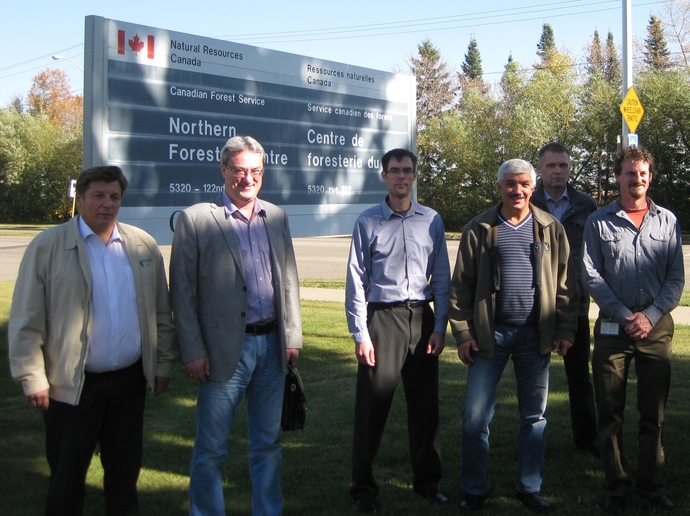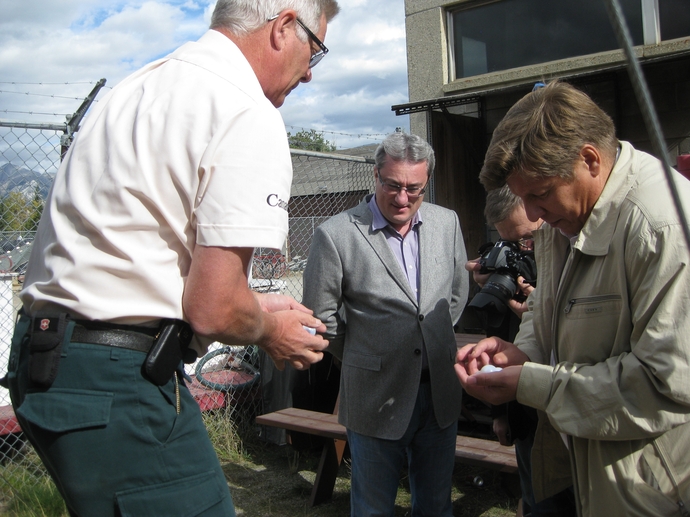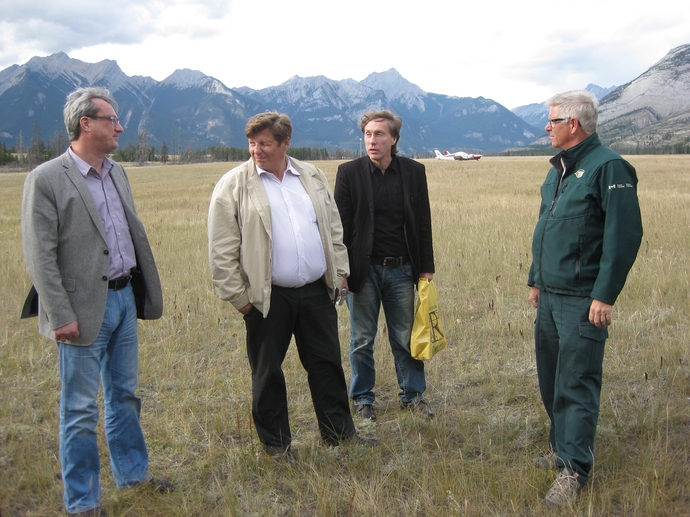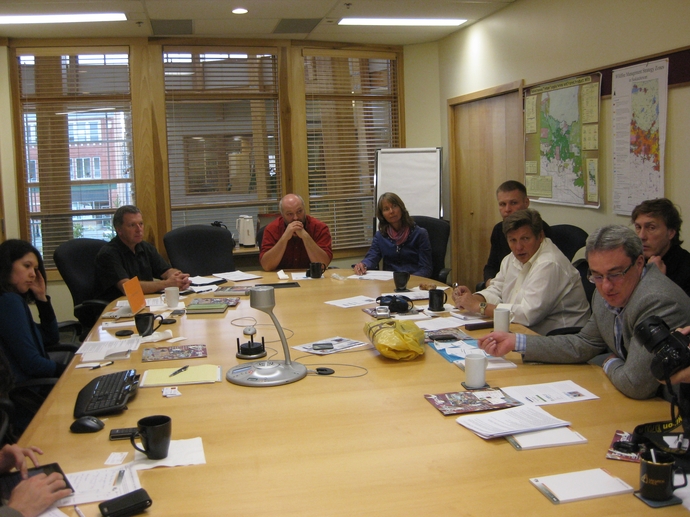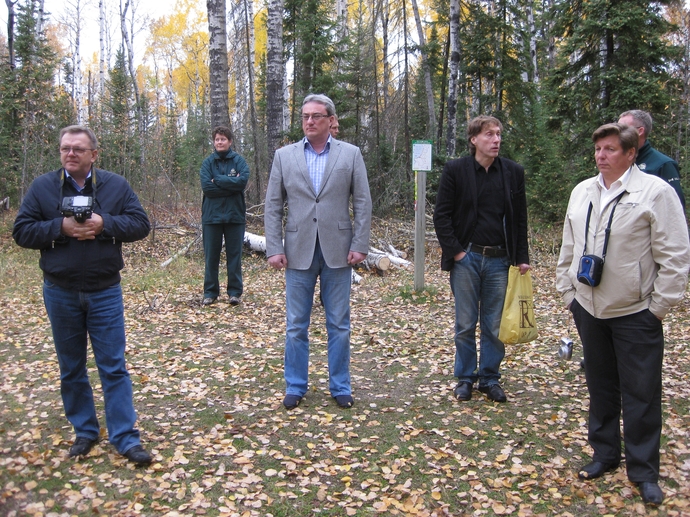Model Forest in the Komi Republic – Reloading
A delegation from Komi visited Canada from September 27th to October 2d in order to get acquainted with the activities of the Canadian Model Forest Network.
The main task of the delegation consisting of the Head of the Komi Republic, Head of the Forest Committee Vasily Osipov, Minister of Industrial Development and Transport Andrey Samodelkin, and Deputy Director of the Silver Taiga Foundation Yury Pautov was to study the Canadian Model Forests experience in order to use it for development of the Komi Model Forest in the Komi Republic. Acquaintance with the Canadian system of heavy forest fires management systems and protection of the infrastructure facilities and settlements against them was also exceptionally interesting. It is well-known that in Canada just as in Russia forest fires are a serious threat both for population and business.
The Komi delegation have met with the representatives of the Canadian Federal Forest Service and management of the Forest Service of Alberta and Saskatchewan provinces, they visited “Jasper”, the largest national park of Canada, located on the boarder of Alberta and British Columbia in the most picturesque Rocky mountains, as well as Prince Albert National Park in Saskatchewan province. Besides, meetings with the representatives of the Secretariat of International Model Forest Network and “Foothills” (Alberta) and “Prince Albert” (Saskatchewan) Model Forest were organized.
It should be noted that the initiative to create Model Forest belongs exactly to Canada – the first of them appeared in this country at the beginning of the 90’s of the last century, and during 15 years this initiative was financially supported from the federal budget of Canada. In different years about 15 Model Forests were functioning in Canada. Their main target was implementation of the methods of sustainable forest management and use and their adaptation to natural and climatic, landscape, and socioeconomic conditions of different provinces of Canada. At the same time, Canadian Model Forest was a platform for reaching a compromise between different stakeholders – business, forest service, environmental NGOs, Indian tribes – during the solving of burning controversial issues related to the methods of forest management, logging, and organization of the environmental management on the forest land in general.
When starting its activity in 1997 Komi Model Forest in the Komi Republic set a target to create a practical example of sustainable forest management in the Komi Republic with conservation of biodiversity and natural values of forest, taking into account of the interests of the local population, economic (rental) assessment of wood resources, interaction of all stakeholders during the forest management, and development of the international forest certification in the republic as the priority activities. Since 2008 and until the present moment Komi Model Forest is the only Russian member of the International Model Forest Network. For nearly ten years its activity has been funded by different international donors, but in recent years financing was stopped. However, the development of the Model Forest in Komi is still important and expedient, which is admitted by many participants of the forest relations.
As a result of five days of fruitful discussions, interesting excursions, and exchange of opinions, the participants of the delegation from the Komi Republic saw firsthand that Model Forest is an efficient tool for coordination of the interests of different parties, implementation of innovations in forestry and conservation planning, forests fire and pests protection. The members of the delegation were especially impressed by the methods and techniques of firefighting organization of the territory and preventive burning for protection of the settlements and infrastructure in Jasper National Park. The Model Forest activity in the field of conservation of the rights, interests, cultural traditions of the Canadian indigenous population – Indians, methods for coordination of the loggers and Indian communities’ interests were also quite impressive.
However, the main result of the trip is an affirmative answer to the question whether it makes sense to support the development of the Model Forest in the Komi Republic at the regional level. According to the unanimous opinion of the participants of the delegation from Komi, the experience of the Canadian Model Forest can be successfully adapted and applied in the Komi Model Forest, primarily, in the vigorous activity on innovations implementation, coordination of the interests of the state bodies, business, and local population during the forest management and use, training and professional development of the forest industry specialists. The next step will be elaboration of a regional development program for the Komi Model Forest for the next few years.
A meeting with the representatives of the Canadian Federal Forest Service in Edmonton
Such “tennis balls” filled with an incendiary mixture are dropped from a helicopter by the Canadian firemen for initiation of the backfire during the fighting of the vast forest fires.
On the field airdrome in Jasper National Park (Alberta province)
A meeting with the representatives of the International Model Forest Network and Prince Albert Model Forest management in the office of the Forest Service of Saskatchewan province.
At the field excursion in Prince Albert National Park (Saskatchewan province).

